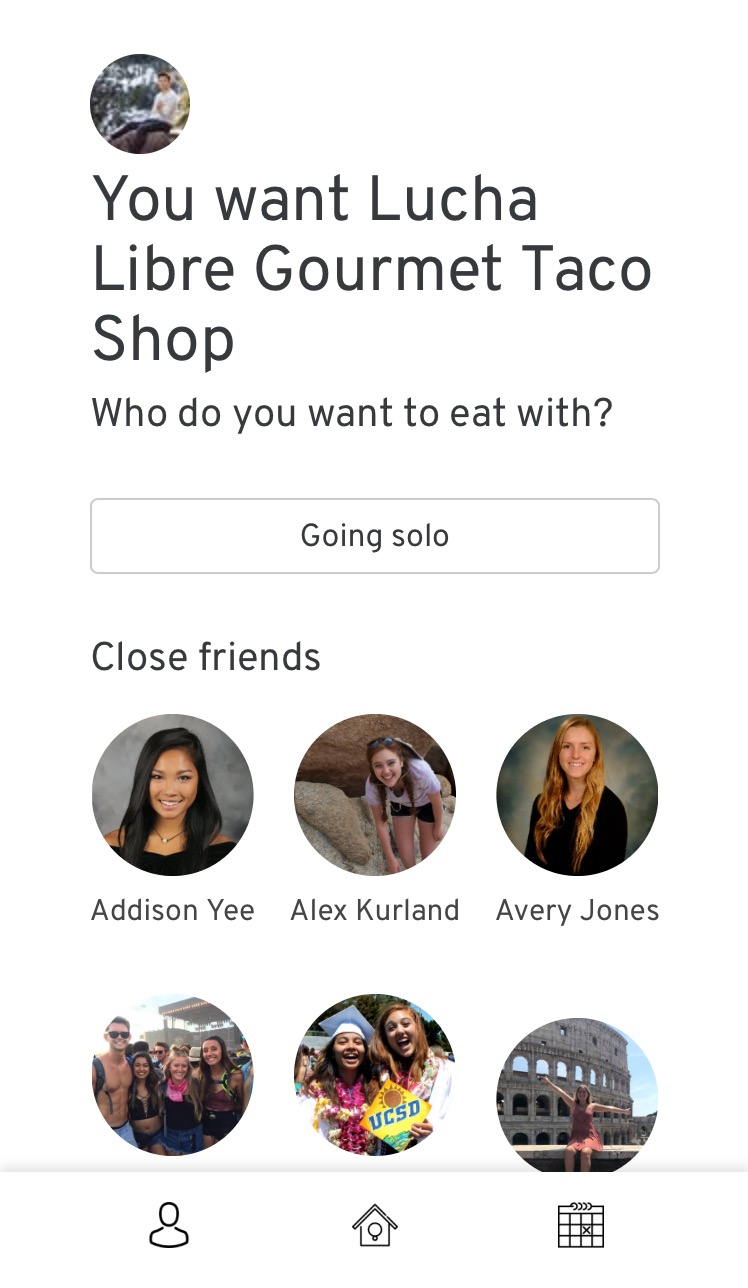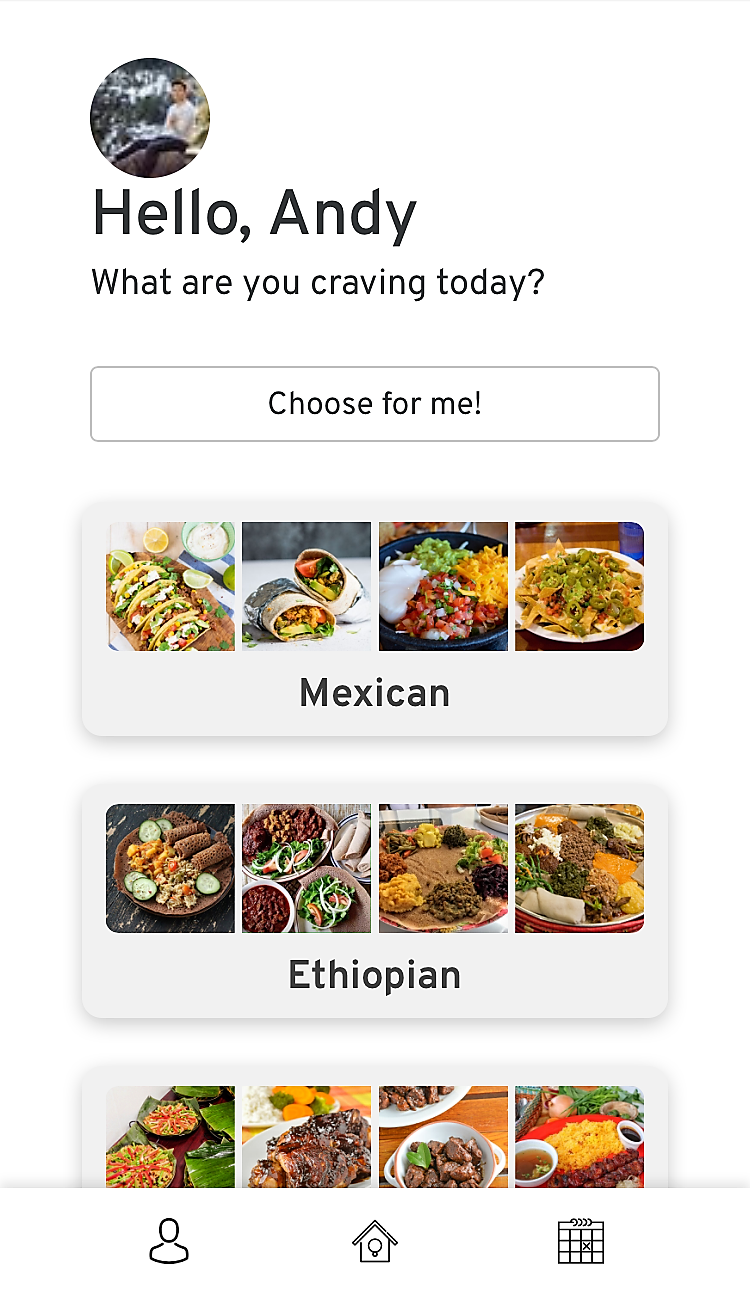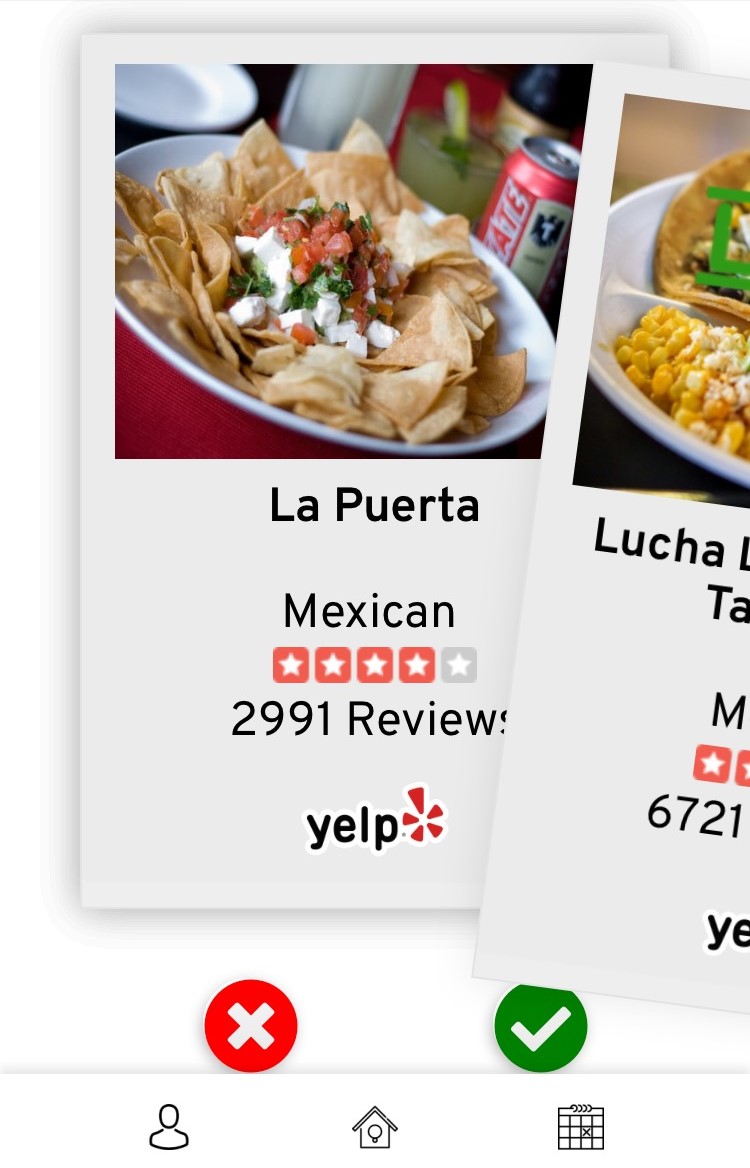HOW
Needfinding: I performed needfinding by interviewing my peers (college students) on why they would take a long time to decide where to eat. Most people answered that they were too indecisive or they just didn't know what they were craving. I also observed that my peers would be overwhelemed with the amount of imformation displayed on Yelp. Based on these observations, I realized we needed a system that could better sort and display necessary information.
Design Process: Development took place over the course of 7 weeks. The first two weeks consisted of needfinding, storyboarding, and wireframing. After having a wireframe, we began to write the skeleton code over the next 2 weeks. At this point, the home page was fully functional, and we began to develop the restaurant selection page, adding the javascript function that allows users to swipe left and right on restaurants. Using the Yelp API, we were able to show the top five results for any one cuisine. After these features were developed, I focused the next three weeks on helping to refine the overall aesthetics of the app, ensuring the UI was easy and pleasing to navigate.
User Testing: We performed A/B testing using Google Analytics on two different versions of our friend selection page (where you schedule a meal with a friend). Based on data like user retention, error correction rates, and user comments, we ended up using version B in our final prototype.
HOW
Needfinding: I performed needfinding by interviewing my peers (college students) on why they would take a long time to decide where to eat. Most people answered that they were too indecisive or they just didn't know what they were craving. I also observed that my peers would be overwhelemed with the amount of imformation displayed on Yelp. Based on these observations, I realized we needed a system that could better sort and display necessary information.
Design Process: Development took place over the course of 7 weeks. The first two weeks consisted of needfinding, storyboarding, and wireframing. After having a wireframe, we began to write the skeleton code over the next 2 weeks. At this point, the home page was fully functional, and we began to develop the restaurant selection page, adding the javascript function that allows users to swipe left and right on restaurants. Using the Yelp API, we were able to show the top five results for any one cuisine. After these features were developed, I focused the next three weeks on helping to refine the overall aesthetics of the app, ensuring the UI was easy and pleasing to navigate.
User Testing: We performed A/B testing using Google Analytics on two different versions of our friend selection page (where you schedule a meal with a friend). Based on data like user retention, error correction rates, and user comments, we ended up using version B in our final prototype.

WHY
Target Demographic: Every Sunday, my teammates and I spend at least 20 minutes deciding on a place to eat after lunch. When we had to pick an app to create for class, we all agreed that this was a need that could be addressed, especially in our friend groups. With Birdie, college students like us could save a significant amount of time.
Design Choices: To seperate ourselves from food recommendation apps like Yelp, we focused on efficiency over variety. Restaurants are displayed one at a time in order to reduce the amount of stimuli the user needs to process at a time, making it easier to reach a decision. The swipe left, swipe right gesture was selected because it is a gesture that many college students are familiar with. Additionally, the friend selection page was designed so that users can see pictures of their friends, making it easier to pick out who they want to grab a meal with.
The general layout of Birdie is very minimalistic, with simple, white backgrounds. This design choice was implemented to avoid distracting from the main focus of the app; the food. With a white background, the vibrant colors of the food can really shine.
HOW
Needfinding: I performed needfinding by interviewing my peers (college students) on why they would take a long time to decide where to eat. Most people answered that they were too indecisive or they just didn't know what they were craving. I also observed that my peers would be overwhelemed with the amount of imformation displayed on Yelp. Based on these observations, I realized we needed a system that could better sort and display necessary information.
Design Process: Development took place over the course of 7 weeks. The first two weeks consisted of needfinding, storyboarding, and wireframing. After having a wireframe, we began to write the skeleton code over the next 2 weeks. At this point, the home page was fully functional, and we began to develop the restaurant selection page, adding the javascript function that allows users to swipe left and right on restaurants. Using the Yelp API, we were able to show the top five results for any one cuisine. After these features were developed, I focused the next three weeks on helping to refine the overall aesthetics of the app, ensuring the UI was easy and pleasing to navigate.
User Testing: We performed A/B testing using Google Analytics on two different versions of our friend selection page (where you schedule a meal with a friend). Based on data like user retention, error correction rates, and user comments, we ended up using version B in our final prototype.


